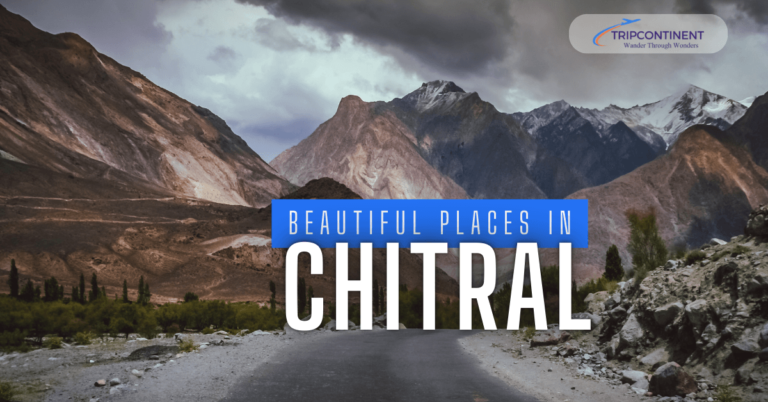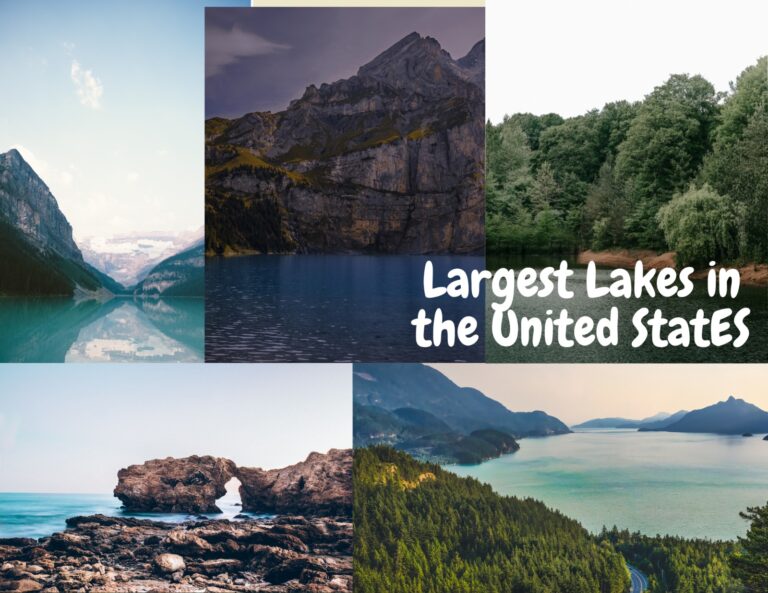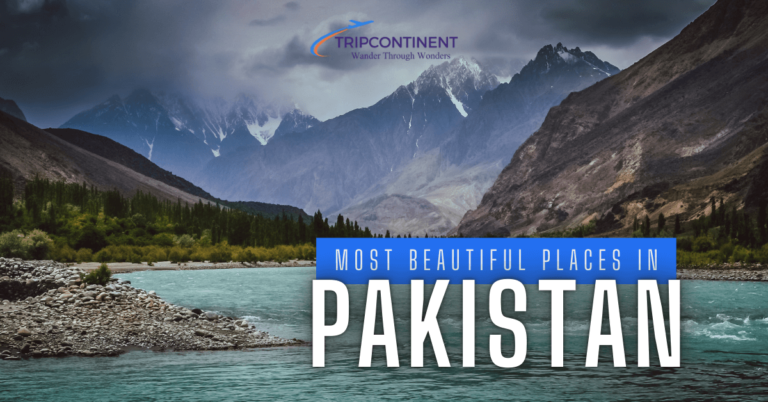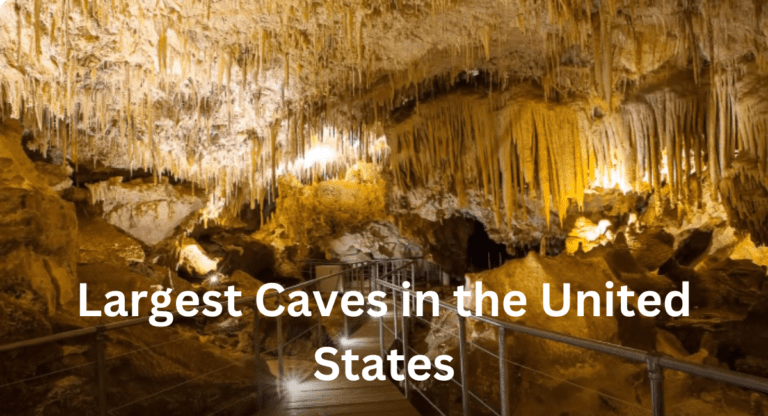10 Forests in the United States You Must Visit Once
The forests of the United States are more than just stunning landscapes; they’re crucial hubs of biodiversity and environmental balance. Spanning the nation, from coast to coast, these woodlands provide havens for wildlife, recreational opportunities for people, and essential ecosystems for our planet.
The preservation effort began with the Forest Reserve Act of 1891, signed into law by President Benjamin Harrison after years of overlogging had devastated the eastern forests. This landmark legislation marked the federal government’s first significant step in setting aside protected “forest reserves.” The U.S. Forest Service, established in 1905, took charge of managing these lands, ensuring they thrived as sustainable resources for generations to come.
Today, these forests in the United States continue to thrive as dynamic ecosystems, shaped by natural processes and careful conservation efforts. They stand as enduring symbols of America’s commitment to preserving its natural heritage and ensuring the health of its environment.
A List of the Top 10 Forests in the United States of America
- Tongass National Forest (17 million-acre)
- Superior National Forest (3.9 million acres)
- Bridger-Teton National Forest (3.4 million acres)
- White River National Forest (2.3 million acres)
- Coconino National Forest (1.8 million acres)
- Cibola National Forest (1.6 million acres)
- Gifford Pinchot National Forest (1.3 million acres)
- Sierra National Forest (1.3 million acres)
- Pisgah and Nantahala National Forests (1.1 million acres)
- White Mountain National Forest (800,000 acres)
1. Tongass National Forest (17 million-acre)
The Tongass National Forest, sprawling over 17 million acres in southeast Alaska, stands as the largest national forest in the United States. Established in 1907, its diverse landscape encompasses temperate rainforests, pristine coastal panoramas, and rugged mountains. Renowned for its stunning natural beauty, the Tongass boasts dramatic fjords, clear rivers, and majestic stands of Sitka spruce and western red cedar.
Designated a UNESCO Biosphere Reserve, the Tongass plays a crucial role in supporting a rich array of wildlife, including Pacific salmon, brown bears, and bald eagles. Its significance is also deeply cultural, with indigenous Tlingit, Haida, and Tsimshian communities having thrived in these lands for millennia, placing profound cultural importance on the forest.
Visitors to the Tongass can immerse themselves in a variety of outdoor activities such as hiking, kayaking, fishing, and wildlife observation, allowing them to experience the remote wilderness firsthand. The forest’s extensive network of trails and campgrounds offers both adventure and solitude, providing a rare opportunity to witness Alaska’s untamed frontier in its purest form.
2. Superior National Forest (3.9 million acres)
The Superior National Forest, sprawling across more than 3.9 million acres in northern Minnesota, stands as a vast and pristine wilderness renowned for its diverse ecosystems, breathtaking landscapes, and abundant recreational opportunities. Established in 1909 and named after Lake Superior, the largest freshwater lake in the United States bordering its northern edge, the forest boasts a tapestry of dense pine, spruce, and birch forests interspersed with thousands of shimmering lakes, rivers, and streams.
A highlight of the Superior National Forest is the Boundary Waters Canoe Area Wilderness, a protected expanse celebrated for its unparalleled canoeing, kayaking, and camping experiences. Here, visitors can immerse themselves in the tranquility of the Northwoods, camping under starlit skies, portaging between pristine lakes, and navigating crystal-clear waterways.
Throughout the year, the forest offers a myriad of outdoor activities such as hiking, fishing, birdwatching, and snowmobiling. In winter, the landscape transforms into a snowy wonderland, attracting ice anglers, cross-country skiers, and snowshoers to its pristine trails and frozen lakes. Whether exploring its natural wonders or seeking solitude amidst its vast expanses, the Superior National Forest promises unforgettable experiences amidst the beauty of Minnesota’s northern wilderness.
3. Bridger-Teton National Forest (3.4 million acres)
The Bridger-Teton National Forest, sprawling across more than 3.4 million acres in western Wyoming, ranks as one of the largest national forests in the United States. Named in honor of explorer Jim Bridger and the majestic Teton Range, this vast expanse offers unparalleled opportunities for outdoor enthusiasts and adventurers.
Characterized by towering mountain peaks, expansive meadows, and pristine alpine lakes like those found in the Grand Teton and Wind River ranges, the forest beckons visitors with a plethora of recreational activities. Hiking, backpacking, camping, fishing, and wildlife viewing are just a few of the pursuits available amidst its diverse landscapes. From the remote wilderness of the Gros Ventre Wilderness to the dramatic gorges carved by the Snake River, the forest’s extensive trail network provides access to some of the most secluded and breathtaking vistas in the American West.
Beyond its natural beauty, the Bridger-Teton National Forest is a haven for wildlife, hosting species such as wolves, elk, bald eagles, and grizzly bears. Rich in history, the forest bears traces of early settlers, fur trappers, and evidence of Native American habitation dating back millennia, adding layers of cultural significance to its awe-inspiring natural wonders.
4. White River National Forest (2.3 million acres)
White River National Forest, spanning 2.3 million acres in the heart of Colorado’s Rocky Mountains, ranks among the most cherished national forests in the United States. Established in 1891 and named after the White River that flows through its valleys, this pristine wilderness offers a diverse landscape of rushing rivers, verdant forests, and alpine meadows framed by rugged peaks.
Within its boundaries lie some of Colorado’s most iconic mountain ranges, including the Sawatch Range, Gore Range, and Elk Mountains, where majestic summits like Mount Elbert, the state’s highest peak, tower above the landscape. The forest provides vital habitat for a variety of wildlife such as elk, mule deer, bighorn sheep, and numerous bird species, making it a haven for nature enthusiasts and wildlife photographers alike.
Visitors to White River National Forest can indulge in a wealth of recreational activities, from fishing in its pristine lakes and rivers to picnicking and camping in serene mountain settings. Its extensive trail system beckons hikers, mountain bikers, and horseback riders to explore its scenic beauty and rugged terrain year-round. With its awe-inspiring vistas and abundant natural wonders, White River National Forest stands as a treasured gem in the Colorado Rockies, inviting all to experience the marvels of its untamed wilderness.
5. Coconino National Forest (1.8 million acres)
The expansive Coconino National Forest covers over 1.8 million acres of diverse landscapes in northern Arizona, showcasing dense pine forests, striking red rock canyons, and imposing mountains. Named after the Coconino plateau, this forest offers a multitude of recreational opportunities and serves as a sanctuary for wildlife and outdoor enthusiasts alike.
Prominent features like Cathedral Rock, Bell Rock, and Oak Creek Canyon are iconic landmarks within the Coconino National Forest, attracting visitors worldwide for activities such as hiking, rock climbing, and photography. Towering above the landscape are the San Francisco Peaks, towering over 12,000 feet and offering year-round opportunities for skiing, snowboarding, and hiking.
The forest teems with a rich variety of plant and animal species, including elk, deer, mountain lions, and numerous bird species, contributing to its ecological diversity and allure. Explorers can delve into the forest’s natural splendor through its extensive network of trails, campsites, and scenic drives, providing ample opportunities to immerse oneself in its tranquil beauty and discover the wonders of Arizona’s northern wilderness.
Also Read: Largest Dams in the World
6. Cibola National Forest (1.6 million acres)
Cibola National Forest, spanning over 1.6 million acres in central New Mexico, showcases a diverse landscape of rugged wilderness, expansive meadows, and jagged mountains. Established in 1905 and named after the mythical Seven Cities of Cibola, rumored to hold vast riches of gold and treasure, this expansive forest is divided into four ranger districts: Sandia, Mount Taylor, Magdalena, and Mountainair, each offering unique landscapes and recreational opportunities.
The Sandia Mountains are renowned for their stunning rock formations and picturesque hiking trails, including the famous Sandia Crest Trail, which affords sweeping views of Albuquerque. Mount Taylor, revered as a sacred peak by multiple Native American tribes, features alpine forests and meadows ideal for hiking and camping adventures.
Outdoor enthusiasts flock to Cibola National Forest year-round to enjoy activities such as hiking, mountain biking, horseback riding, and wildlife viewing. The forest’s diverse ecosystems support a wide array of plant and animal species, from golden eagles and black bears to mule deer and elk. Beyond its natural beauty, Cibola National Forest boasts a rich cultural history with remnants of early Spanish settlements scattered across its terrain and evidence of Native American habitation spanning millennia. Whether seeking adventure or tranquility, visitors are sure to be captivated by the breathtaking scenery and storied heritage of Cibola National Forest.
Also Explore: Most Beautiful Islands in the World
7. Gifford Pinchot National Forest (1.3 million acres)
The Gifford Pinchot National Forest sprawls across more than 1.3 million acres of varied terrain in southwest Washington State. Named after Gifford Pinchot, a prominent conservationist and the inaugural Chief of the US Forest Service, this forest offers a diverse range of landscapes from lush forests to rugged volcanic peaks. It serves as a haven for outdoor enthusiasts, providing abundant recreational opportunities.
Visitors to the Gifford Pinchot National Forest encounter towering old-growth forests, pristine alpine lakes, and iconic volcanic summits like Mount St. Helens and Mount Adams. The forest boasts an extensive network of 1,500 miles of trails, inviting hikers, backpackers, and wildlife enthusiasts to explore its natural wonders year-round. In winter, it transforms into a snowy playground, attracting skiers, snowboarders, and snowshoers to its slopes and trails.
With a rich cultural history that includes Native American presence spanning millennia, the forest also serves as a testament to conservation efforts and the enduring legacy of those who have championed the preservation of America’s natural treasures. Its stunning landscapes, abundant wildlife, and wealth of recreational activities continue to captivate both locals and tourists alike, highlighting the enduring importance of protecting our natural heritage.
8. Sierra National Forest (1.3 million acres)
Sierra National Forest, spanning over 1.3 million acres deep within California’s Sierra Nevada Mountains, stands as a cherished haven for outdoor adventurers and nature enthusiasts alike. Established in 1893, its name honors the towering Sierra Nevada range that defines its diverse landscape.
The forest features a rich tapestry of environments including lush pine, fir, and cedar forests, rugged mountain peaks, and deep river valleys. It boasts some of California’s most iconic natural landmarks such as the majestic peaks of the Ansel Adams Wilderness, the pristine waters of the Kings River, and the awe-inspiring Yosemite Valley.
Throughout the year, Sierra National Forest offers a wealth of outdoor activities. Its extensive trail system invites visitors to explore via hiking, backpacking, mountain biking, and equestrian riding. Numerous lakes and rivers provide opportunities for boating, fishing, and thrilling whitewater rafting adventures. The forest’s serene camping and picnic areas offer breathtaking views of the Sierra Nevada, making it an ideal retreat for families and outdoor enthusiasts.
Rich in biodiversity, Sierra National Forest supports a wide array of plant and animal species, including bald eagles, black bears, mule deer, and elusive mountain lions, making it a paradise for wildlife enthusiasts and photographers. Whether seeking adventure or tranquility, visitors to Sierra National Forest are sure to be captivated by its enduring wilderness and natural splendor.
9. Pisgah and Nantahala National Forests (1.1 million acres)
The Pisgah and Nantahala National Forests together encompass more than 1.1 million acres of stunning landscapes nestled in the Appalachian Mountains of western North Carolina. These forests serve as vital sanctuaries for the region’s rich biodiversity and offer unparalleled opportunities for outdoor enthusiasts.
Established in 1916, Pisgah National Forest is renowned for its towering peaks, including Mount Mitchell, the highest point east of the Mississippi River. With over 400 miles of trails, including segments of the famed Appalachian Trail, visitors can indulge in activities such as hiking, camping, fishing, and rock climbing. Scenic highlights like Looking Glass Falls and the Cradle of Forestry, a historic site dedicated to the conservation legacy in the US, are also nestled within Pisgah’s boundaries.
Established in 1920, Nantahala National Forest is characterized by its pristine wilderness areas, breathtaking vistas, and deep river gorges. The Nantahala and Chattooga Rivers offer thrilling whitewater rafting and kayaking opportunities, while the extensive trail network attracts hikers, mountain bikers, and horseback riders alike. Fishing enthusiasts can enjoy the abundance of lakes and streams, and scenic overlooks like Wayah Bald and Whiteside Mountain offer panoramic views that showcase the forest’s natural splendor.
10. White Mountain National Forest (800,000 acres)
White Mountain National Forest, spanning over 800,000 acres across New Hampshire and Maine, stands as a beloved destination in the northeastern United States. Established in 1918, this expansive forest is celebrated for its rugged alpine lakes, dense forests, and rugged granite formations.
Central to the forest’s allure are the White Mountains, a subrange of the northern Appalachian Mountains. These peaks include iconic summits like Mount Washington, known for its dramatic weather and status as one of the region’s highest points. With over 1,200 miles of hiking trails ranging from leisurely walks to challenging summit climbs, the forest caters to outdoor enthusiasts year-round. In winter, the landscape transforms into a haven for snow sports enthusiasts, offering opportunities for ice climbing, skiing, snowboarding, and snowshoeing.
Beyond recreation, White Mountain National Forest supports a diverse array of plant and animal species, including moose, black bears, and the elusive Canada lynx. The forest’s terrain holds traces of early settlements, logging activities, and Native American presence, enriching its historical tapestry and adding layers of cultural significance to its natural beauty.
Also Read: 12 Largest Zoos in the USA
Table Comparison of the Forests in the United States
| Forest | Area | Location |
| Tongass National Forest | 17 million-acre | Southeast Alaska |
| Superior National Forest | 3.9 million-acre | Minnesota |
| Bridger-Teton National Forest | 3.4 million-acre | Wyoming |
| White River National Forest | 2.3 million-acre | Colorado |
| Coconino National Forest | 1.8 million-acre | Arizona |
| Cibola National Forest | 1.6 million-acre | New Mexico |
| Gifford Pinchot National Forest | 1.3 million-acre | Washington |
| Sierra National Forest | 1.3 million-acre | California |
| Pisgah and Nantahala National Forests | 1.1 million-acre | North Carolina |
| White Mountain National Forest | 800,000 acre | New Hampshire and Maine |
Conclusion
The United States has a remarkable array of forests, each offering unique beauty and allure, from California’s ancient redwoods to Alaska’s rugged peaks. These top 10 forests in the United States offer abundant opportunities for exploration, discovery, and a profound connection with nature. Whether seeking adventure, solitude, or simply to immerse oneself in the natural world, each forest promises unforgettable experiences and a chance to appreciate the rich biodiversity and scenic wonders that define America’s wilderness.
FAQs
Which Country Has the Largest Area of Forests in the World?
Russia has the largest area of forests globally, covering over 8 million square kilometers, which accounts for approximately 50% of its total land area. This extensive forested area surpasses the combined one-fifth of global forest area.
What Are Some of the Most Famous Forests in the United States?
Some of the most renowned forests in the United States include Olympic National Forest in Washington, Great Smoky Mountains National Park spanning Tennessee and North Carolina, and Redwood National and State Parks in California. These destinations are celebrated for their stunning landscapes, biodiversity, and iconic natural features.
What Kinds of Wildlife Can be Found in the Forests of America?
American forests are home to a diverse range of wildlife, including black bears, deer, elk, wolves, eagles, owls, and various species of fish. These forests provide essential habitats for numerous other animals, contributing to the rich biodiversity of the region.
What is the Largest Forest in the World?
The largest and most well-known tropical rainforest in the world is the Amazon. The Amazon rainforest is over three times larger than the Congo Basin, which is the second largest rainforest in the world in terms of primary forest extent.

I’m Sophia Jones, an adventurer at heart from New York City, USA. I live for travel and exploration, always eager to discover new places, meet fascinating people, and try out diverse cuisines. Over the past few years, I’ve traveled to numerous countries, immersing myself in different cultures and creating unforgettable memories.






